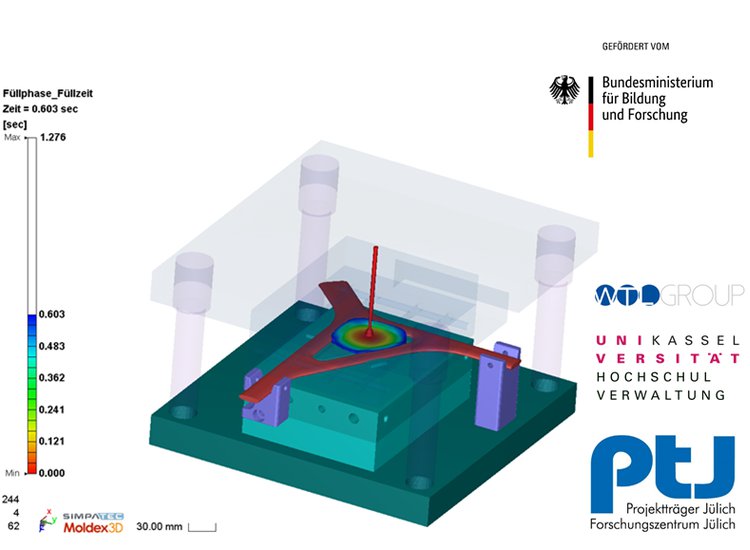TightHybrid is about how hybrid components that are made of injection-molded plastic and metal can be produced in such a way that they remain media-tight under mechanical and thermal loads. SimpaTec supports the project partners within this project with injection molding and structural simulations.
TightHybrid is a research project funded by the German Federal Ministry of Education and Research (BMBF). Besides SimpaTec, the University of Kassel and WTL Formenbau GmbH are involved in the project as joint partners. The project is part of the BMBF's materials platform "Hybrid Materials - New Possibilities, New Market Potentials" (HyMat). The aim of the project is to investigate the media-tightness of hybrid components made from a combination of injection-molded plastic and metal. The components are subjected to thermal and mechanical loads during the analysis. This involves components that are connected solely by the adhesion between metal and plastic created during the injection molding process, without additional screw connections or the use of seals.
SimpaTec's role in the project is to support the experimental analysis carried out by the project partners with simulations. This initially includes process simulations of the injection molding process of test coupons and demonstrator components with Moldex3D.
TightHybrid
media-dense plastic-metal hybrid composites
TightHybrid

Objectives:
The aim is to investigate the manufacturability and optimize the process parameters. Additionally, the load and deformation in the metal component of the demonstrator during the process will be investigated using structural simulations with the structural solver Marc. Various other structural simulations will also be carried out to accompany and reproduce the planned experiments on adhesion between the components of the hybrid parts (test coupons and demonstrator). Marc is also used for this in combination with Digimat for coupling the Moldex3D results (e.g. fiber orientations) with a micromechanical material model. A further aspect is the development of the material models for the plastic components required for the simulations described above - this includes both the rheological models for the process simulation and the thermomechanical models for the structural simulations.
